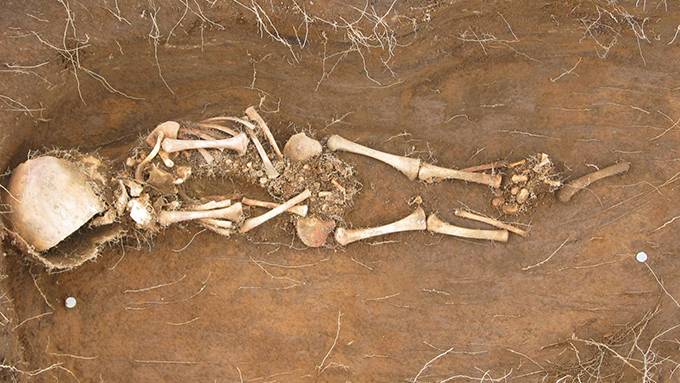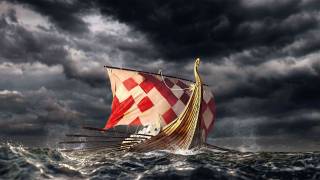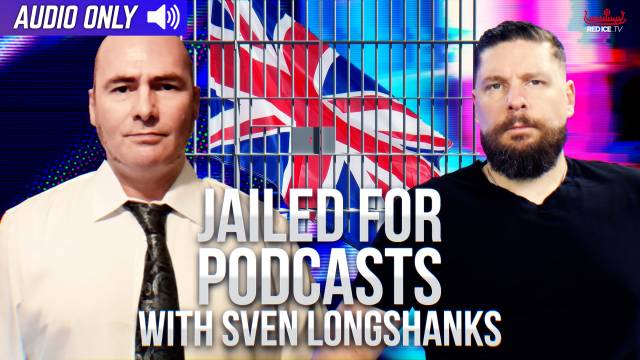Archaeologists Find Viking Families Among Skeletons in Northern Iceland
Source: forbes.com
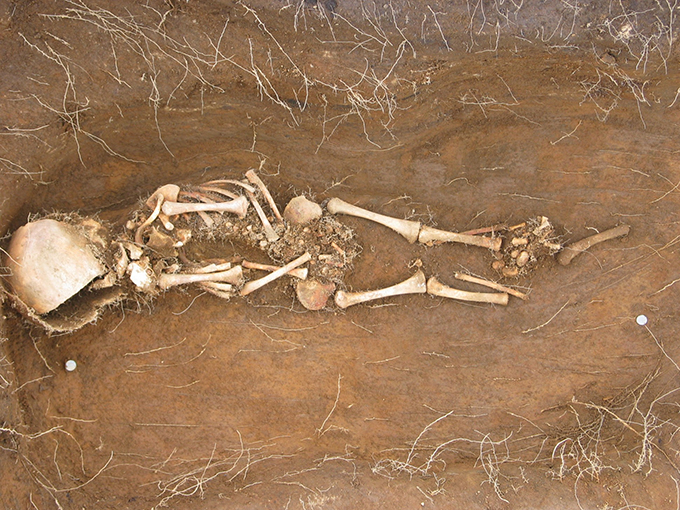
Skeleton of a neonate from Hofstadir. (Image used with kind permission of Hildur Gestsdóttir.)
On a small, out-of-the-way farm called Hofstaðir in northern Iceland, archaeologists have recovered over one hundred skeletons that are helping to rewrite our understanding of the Viking Age and medieval population of the island. A massive celebration hall unlike any seen before on the island and an octagonal cemetery boundary provide key clues into both Viking and early Icelandic families.
As I was recently in Reykjavik on vacation, I met up with bioarchaeologist Hildur Gestsdóttir, who graciously sat down with me on a weekend to talk about Hofstaðir. Gestsdóttir works at the Iceland Institute of Archaeology, and she has been excavating at Hofstaðir off and on for fifteen years. When we talked, she had just returned with boxes full of new skeletons to be analyzed and new understandings about the site.
Backing up a bit, Iceland is a country composed entirely of immigrants, as no evidence of long-term human occupation predates the 9th century AD, when the Vikings came from Scandinavia. Gestsdóttir’s research using strontium isotopes on the earliest skeletons found in Iceland revealed numerous people with values higher than seawater, confirming origins in Scandinavia or northern Europe. Within just a century, the Vikings had settled all arable parts of Iceland, but archaeologists disagree as to whether they settled the coast and then pushed inland or whether early inland settlements are evidence that the Vikings moved inland before exploring the entire coast.
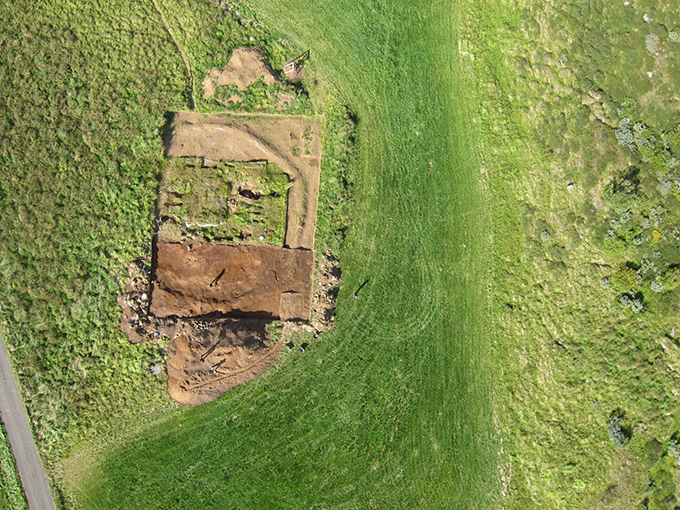
Drone shot of the site of Hofstadir, taken in 2013. (Image used with kind permission of Hildur Gestsdóttir.)
This means that Hofstaðir is a particularly interesting site in its location, as it lies just west of lake Mývatn in northern Iceland, nearly 30 miles from the coast. The farm was probably established around 950 AD, at the height of the Viking Age, and includes the largest and earliest Viking longhouse found to date, complete with beheaded cows whose skulls were used as decoration. By 1100, a church at Hofstaðir marks a religious transition. The octagonal cemetery that surrounds the church contains more than 120 people and likely includes the earliest converts to Christianity in this area. More importantly, these people are almost certainly all part of a farming family.
Gestsdóttir is especially interested in the bioarchaeological study of the family, or what skeletons can tell us about the composition of ancient families and how members of families interacted with each other and their environment. This is a new perspective in archaeology, which tends to focus on the household by using the remains of houses and artifacts to estimate what the family or community may have looked like. But ‘family’ is a difficult thing to find in the past, as we don’t know whether early Icelanders considered this the nuclear family, the extended family, or a larger group that included both blood relations and non-related members of the household. With Hofstaðir, though, she was able to use evidence of osteoarthritis on the skeletons to demonstrate genetic links among these people. Gestsdóttir found the first clear evidence of an early Icelandic family.
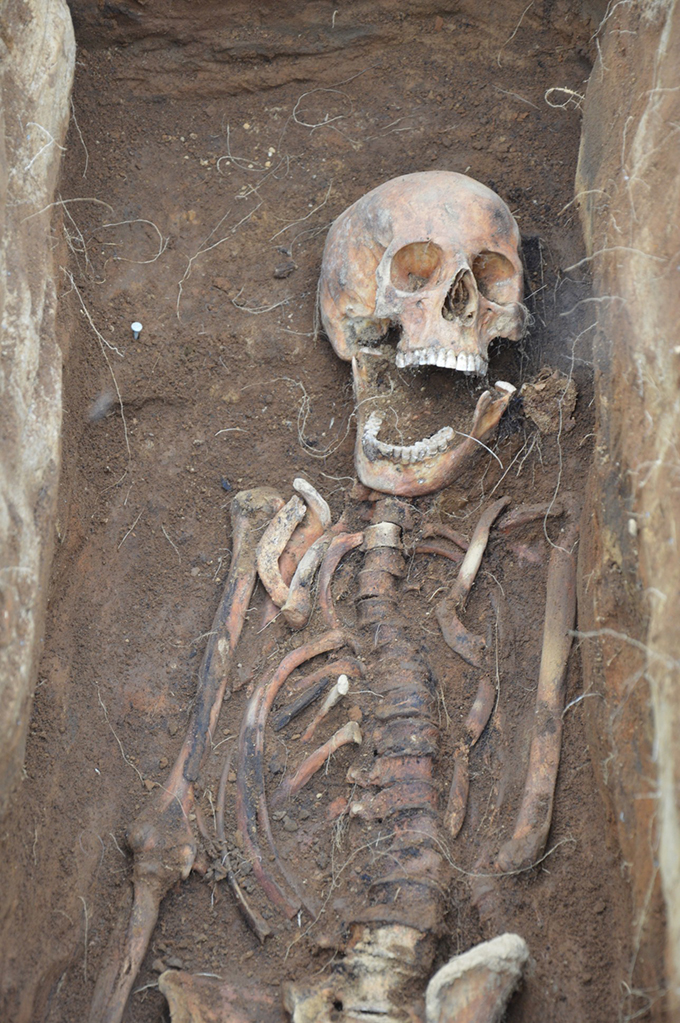
Adult skeleton in situ at Hofstadir, taken during the summer 2015 excavation. Many adults at Hofstadir show evidence of inherited osteoarthritis. (Image used with kind permission of Hildur Gestsdóttir.)
Osteoarthritis may seem like a particularly unromantic disease, especially since most everyone over 40 suffers from some amount of degenerative joint disease. But Gestsdóttir became aware of medical literature noting the high frequencies of hip osteoarthritis in certain contemporary Icelandic families, and one family was found to have a rare genetic mutation leading to osteoarthritis. She looked at the frequencies of hip osteoarthritis in ancient Iceland, finding that about 8% of the population suffered from it. This seems small, but she compared it to Sweden (3%), Denmark (7%), and England (3-6%). More telling, though, was the Hofstađir population, with a whopping 15% of the population having hip osteoarthritis. Since all early Icelanders were farmers and engaged in similar activities, the pattern of osteoarthritis that Gestsdóttir found means that inheritance rather than overuse of the joints is the likely cause. “The pattern of hip osteoarthritis at Hofstađir demonstrates that the majority of people buried there are members of a single biological family,” she writes in her dissertation, and this “brings a new dimension to the discussion” of the family in bioarchaeology. Namely, if many early Icelanders were in pain or otherwise incapacitated from an early adult age due to inherited osteoarthritis, how did the rest of the family care for them and shoulder their work burdens?
Gestsdóttir plans to analyze the remainder of the skeletons found this summer for osteoarthritis, and she also hopes to eventually do more isotope and DNA analyses to better understand the family that lived at Hofstaðir. While infant mortality was predictably high at the site, once people made it through childhood many lived long lives and some even survived quite a while with normally deadly diseases. The skeleton of a woman in her late 40s was found at Hofstaðir in 2003, and Gestsdóttir found that she likely suffered from multiple myeloma, a cancer that affects plasma cells, for several years before her death. It is the only published case of cancer in ancient Iceland to date, and one of only a handful of archaeological cases of multiple myeloma worldwide.
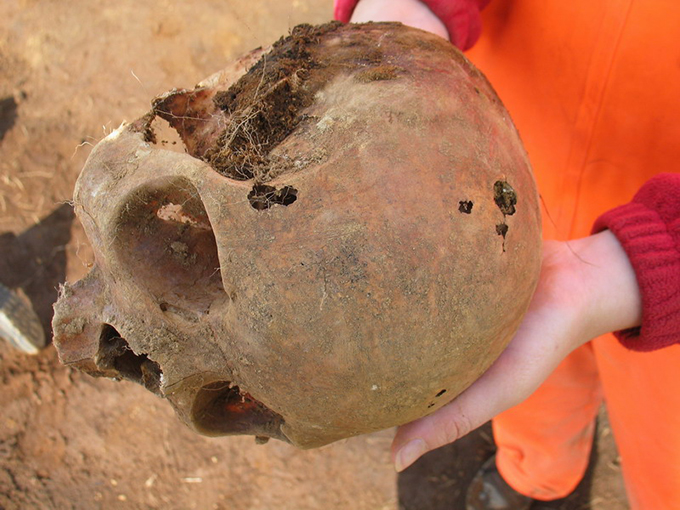
Woman in her late 40s with multiple myeloma from ancient Hofstadir. Photo taken in 2003 during excavation. (Image used with kind permission of Hildur Gestsdóttir.)
While I had a fantastic time in Iceland with my family, helped out by a gorgeous week of weather and all the conveniences of modern times, I can only imagine what early Icelanders faced, eking out a farming-pastoral existence in the winter months on the small patches of arable land scattered over the island. Gestsdóttir’s fascinating work at Hofstaðir reveals not only the difficulty of surviving in a harsh arctic environment but also how family was key to that survival.
Source: forbes.com
